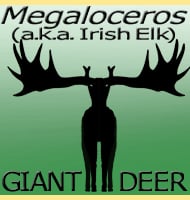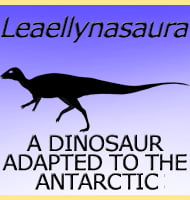In Depth
Mesonyx has been repeatedly identified as a wolf-like predator due to its similar size and overall appearance to modern wolves; although it’s important to mention that it was not directly related to modern wolves as Mesonyx appeared (and disappeared) long before the direct ancestors of them. Still, Mesonyx probably filled the same ecological niche of a predator that runs down its prey which could have included everything from small to medium sized mammals. It is unknown if Mesonyx hunted in groups, but current thinking and fossil evidence suggests that pack hunting in mammals evolved with the higher levels of brain power and intelligence that are hall marks of the later members of the Carnivora group of mammals. Earlier mammalian hunters like Mesonyx are usually attributed as acting from raw instinct rather than developing sophisticated behaviour.
The high sagittal crest that runs across the top of the skull would have allowed for the attachment of larger jaw closing muscles. This would allow for the placement of larger jaw closing muscles that would in turn proportionately increase the bite force of Mesonyx. This would give Mesonyx a crushing bite allowing it to quickly kill smaller prey as well as hold on to larger animals that Mesonyx may have been able to weaken with successive bites. Mesonyx, along with other members of the Mesonychidae were likely some of the top predators of their day. However the emergence of creodonts such as Hyaenodon and Sarkastodon seems to have signalled the extinction for mesonychids as their remains disappear from the fossil record during the late Eocene.
As the type genus of the Mesonychia, Mesonyx is often credited as being ancestral to whales, or at the very least closely related to their ancestors. This is based upon the interpretation that mesonychids have several similarities with whales, particularly of note, triangular molar teeth that are also present in many of the earliest whales, the archaeocetids. However this is an antiquated notion as later discoveries have found that the earliest whales are more likely descended from hippopotamids due to much closer skeletal characteristics.
Mesonyx was used as the basis for early reconstructions of Andrewsarchus which is so far only known from a skull. Because the skull of Mesonyx is smaller in life, it was scaled up to a comparable size so that the increased skeleton could be used as a stand in for the missing Andrewsarchus remains. This led to Andrewsarchus being estimated at six meters long and being declared one of if not the largest meat eating land mammal of all time. However, modern study has since cast doubt upon Mesonyx being a good body model as the skull of Andrewsarchus is more like that of an enteledont in proportion. While this has had greater ramifications for Andrewsarchus, the wider paleontological community no longer considers Mesonyx to be that closely related to Andrewsarchus as previously thought.
Further Reading
– Descriptions of some new Vertebrata from the Bridger Group of the Eocene. – Proceedings of the American Philosophical Society 12:460-465. – Edward Drinker Cope – 1872. – Skeletons of terrestrial cetaceans and the relationship of whales to artiodactyls. – Nature 413:277-281. – J. G. M. Thewissen, E. M. Williams & S. T. Hussain – 2001. – New mesonychid (Mammalia) material from the Lower Paleogene of the Erlian Basin, Nei Mongol, China. – Vertebrata PalAsiatica 50 (3): 245–257. – Xun Jin – 2012.










